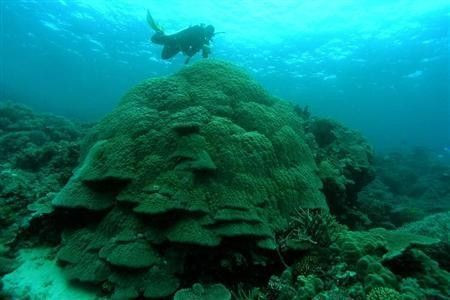Harlequin Filefish: A Fish That Disguises Itself In Coral Smell To Escape Predators

An Australian-led study by the ARC Centre for Coral Reef Studies at James Cook University found that a coral-eating reef fish called the harlequin filefish adopted the smell of coral to escape and hide from its predators. Under the sea, "you are what you eat" was more of a situation involving life and death. The research was published in Proceedings of the Royal Society, a journal, on Dec 11.
The harlequin filefish disguises its smell to that of the coral as a means of survival, reported the Brisbane Times. The small shellfish that lived on coral branches were fooled by the smell as well.
According to Dr Rohan Brooker, the lead author of the study, small was more important to disguise when compared to vision. He said that predators usually relied on odours to find their prey. He said that because of that, even visually camouflaged animals had a chance of sticking out if they give out strong odours.
This is the first time that such a type of camouflage has been found in higher-order animals like fish. Dr Brooker said that this was exciting as it opened up the possibility of a wide range of animals using similar mechanisms.
The co-author of the study, Professor Philip Munday, said that the greatest advantage that the fish had for survival was the ability to camouflage itself chemically. He explained that at night, the harlequin filefish hid behind coral colonies, and because of that, it not only looked like a coral branch, but the smell was that of coral as well. He added that this helped them remain undetected by the nocturnal predators.
He remarked about the ability of the animals to adapt to their habitats by altering their odour. He said that the adoption of the odour not only confused the predator but matched it so closely to the odour of the coral that small crabs were unable to distinguish the two.
Munday explained that it was not a completely flawless camouflage if it moved to other species because the cover of the fish gets blown. This is because it would start sheltering itself in places where different species of coral lived and not the one that it had been eating. He said that in such times, the predator could easily identify its presence and track it.




















